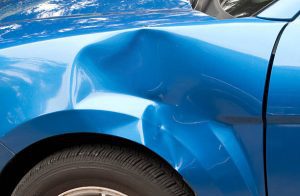The Basics of Car Waxing


The Basics of Car Waxing


Introduction
Car waxing is an important part of car maintenance that helps protect the paintwork, enhance the vehicle’s appearance, and extend its lifespan. Wax creates a barrier between the paint and the elements, preventing damage from UV rays, dirt, and pollutants. In this article, we will cover the basics of car waxing, including the benefits of waxing, types of car wax, and step-by-step instructions on how to wax your car effectively.
1. The Benefits of Car Waxing
Car waxing offers several advantages for your vehicle’s exterior. Here are some key benefits:
1.1 Protection Against Environmental Factors
Car wax acts as a protective layer, shielding your vehicle’s paint from harmful UV rays, acid rain, bird droppings, and other contaminants. It prevents these elements from directly contacting the paint, reducing the risk of oxidation and fading.
1.2 Enhanced Gloss and Shine
Waxing your car provides a deep, reflective shine that enhances its overall appearance. It fills in minor imperfections and creates a smooth surface, giving your vehicle a showroom-like finish.
1.3 Easier Cleaning
The smooth surface created by car wax makes it easier to clean dirt, dust, and other debris from your car’s exterior. It also minimizes the adherence of grime, allowing for quicker and more efficient washing.
1.4 Prolonged Paint Lifespan
Regular waxing helps extend the life of your car’s paint by preserving its integrity. The wax acts as a sacrificial layer, absorbing minor scratches and swirl marks, protecting the underlying paint.
2. Types of Car Wax
Before diving into the waxing process, it’s essential to understand the different types of car wax available. The most common types include:
2.1 Carnauba Wax
Carnauba wax is a natural wax derived from the leaves of the carnauba palm tree. It provides a deep, warm shine and excellent water-repellent properties. However, carnauba wax has a shorter lifespan compared to synthetic waxes and requires more frequent applications.
2.2 Synthetic Wax
Synthetic waxes, also known as polymer or paint sealants, are chemically engineered to provide long-lasting protection. They typically last longer than carnauba wax and offer superior durability. Synthetic waxes are easy to apply and remove, making them a popular choice among car enthusiasts.
2.3 Spray Wax
Spray waxes are convenient and user-friendly options for quick touch-ups and maintenance. They come in a spray bottle and can be applied directly onto the vehicle’s surface. While spray waxes offer less longevity compared to paste or liquid waxes, they provide a glossy finish and can be used in between regular waxing sessions.
3. Step-by-Step Guide to Car Waxing
Now that we have covered the benefits and types of car wax, let’s move on to the step-by-step process of waxing your car:
3.1 Gather the Required Materials
Before you start waxing, gather the necessary materials:
- Car wax of your choice (carnauba wax, synthetic wax, or spray wax)
- Applicator pad or microfiber cloth
- Clean microfiber towels
- Car wash soap
- Water
- Hose or pressure washer
- Optional: Clay bar and lubricant for surface preparation
3.2 Prepare the Surface
Ensure that your car’s exterior is clean and free of dirt, debris, and contaminants. Wash your car thoroughly using car wash soap and water. Rinse off any soap residue and dry the vehicle completely using clean microfiber towels.
3.3 Clay Bar Treatment (Optional)
For optimal results, you can perform a clay bar treatment to remove embedded contaminants from the paint surface. Spray a lubricant onto the surface and gently rub the clay bar back and forth. This process helps smoothen the paint and prepares it for wax application.
3.4 Apply the Wax
Follow these steps to apply the wax:
- Shake the wax container well to ensure proper consistency.
- Apply a small amount of wax onto the applicator pad or directly onto the car’s surface.
- Begin waxing one section at a time using circular or back-and-forth motions.
- Ensure even coverage and apply a thin, uniform layer of wax.
- Repeat the process until you have covered the entire car, including all painted surfaces.
3.5 Allow the Wax to Cure
Let the wax dry and cure according to the instructions provided by the manufacturer. The curing time can vary depending on the type of wax used.
3.6 Buff and Polish
Once the wax has cured, use clean microfiber towels to buff and polish the waxed surface. Apply light pressure and work in circular motions to remove any excess wax and reveal the desired shine.
3.7 Repeat the Process
For optimal protection and shine, it is recommended to wax your car every 2-3 months or as needed. Regular waxing helps maintain the protective layer and extends the lifespan of the wax.
Conclusion
Car waxing is a vital part of car maintenance that provides numerous benefits, including protection against environmental factors, enhanced gloss, and prolonged paint lifespan. By understanding the different types of wax available and following the step-by-step guide provided in this article, you can effectively wax your car and enjoy a beautiful, protected finish. Remember to choose the appropriate wax for your needs, prepare the surface properly, and apply the wax with care. With regular waxing and proper maintenance, your car’s exterior will stay protected and maintain its shine for years to come.








